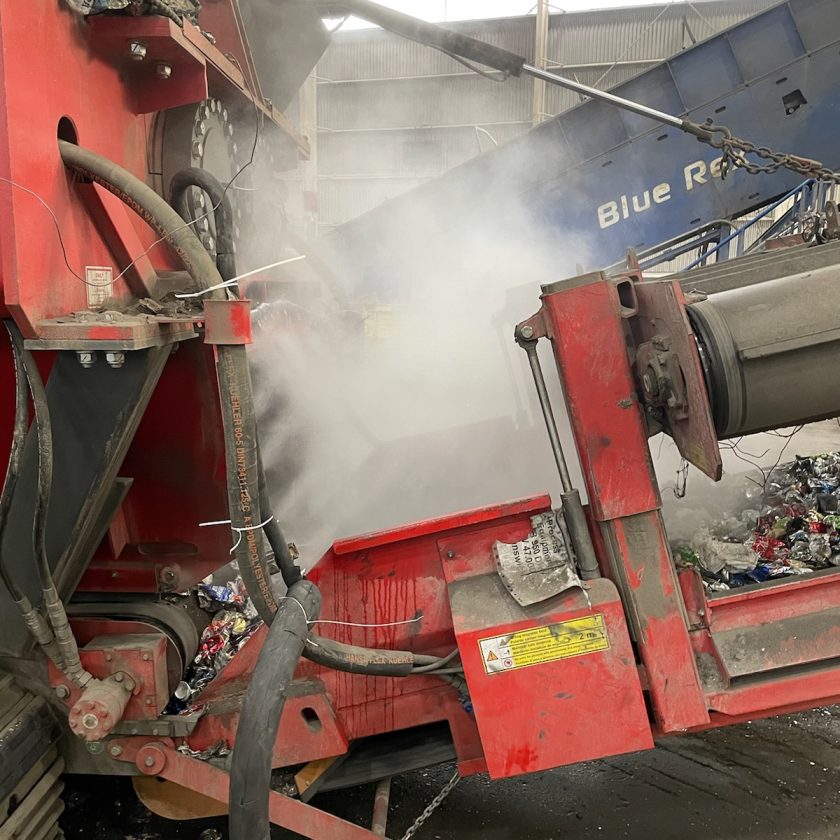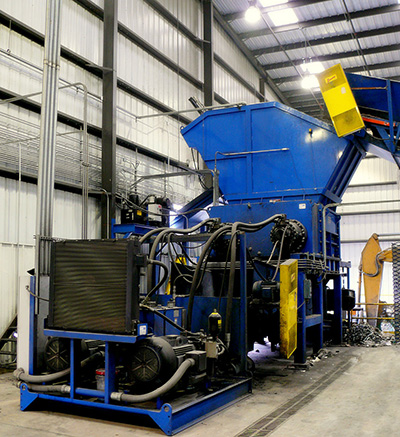
Cement is the most commonly used building material worldwide and the market for cement products is continuously growing. However, manufacturers have to comply with ever stricter environmental regulations in order to get air pollution under control.
Depending on the processes used, the emissions from producing cement are at 0.6 to 0.99 t of CO2 per ton of cement. The CO2 emissions from this sector are estimated to account for 7% to 8% of overall global carbon dioxide emissions. An approach to sustainably reduce greenhouse gas emissions and production costs is to increase the use of alternative fuels.
Fluid materials like waste oil or solvents but also solids for example are used instead of coal and gas. The majority is here composed of municipal and industrial waste, such as plastic, paper, composite material or textile mixes as well as wood pellets. The use of entire or shredded waste tires is also welcome.
The calorific value of the rubber from waste tires is comparable to that from hard coal, and the iron from the reinforcement can be incorporated mineralogically into the cement. This minimizes the addition of ferrous corrective substances.
Alternative fuels are available in large quantities and at low costs and can be disposed of completely in a safe high-temperature process in the rotary kilns at the cement plants. Thus, these materials do not have to be landfilled or otherwise disposed of.
As different materials have different calorific values, the complete household waste cannot simply be fed into the combustion process in the kiln. Especially in countries where waste separation is not developed like in Europe, the challenge is huge. How the alternative fuels are composed and how they are used often also depends on their availability in a determined region and, in particular, on the economic aspects.
In addition, the materials have to fulfil determined quality requirements. Some operators for example only use processed waste with a defined minimum calorific value and low heavy metal content. At this regard, the alternative fuel often may only have a determined particle size and a determined density. The moisture content is also important.

From the Receiving to the Feeding Process
As a system provider, BEUMER Group develops tailor-made solutions for the entire material flow chain from unloading the delivery vehicle to storing, weighing, conveying and control feeding of solid alternative fuels. BEUMER Group also provides fully automated systems that can control feed, singulate and convey large and heavy tires to the inlet of the rotary kiln. BEUMER Group supports the cement manufacturers with its intralogistic solutions in modernizing their plants in sustainable and cost-efficient ways.
“Our know-how and tailor-made systems permit us to optimize our customers’ processes,” said Jan Tuma, chief sales officer (CSO), BEUMER Group, Czech Republic. The user receives everything from one source, thus having a unique contact. In addition to a comprehensive range of reliable systems for handling with alternative fuels, the specialists also focus on planning logistics and customized conveying and storage solutions, including crane halls and steel structures.
Clear Unique Feature
“The material flow chain is implemented with the single components of our BG OptiSeries,” said Tuma. “We have developed these different systems in our company – a clear unique feature on the market.” The systems are designed to meet the requirements for functionality and performance in daily operation.
The material prepared for combustion in the kiln is usually supplied in moving-floor trailers. The hydraulically controlled moving floor moves the load outwards on the conveying system.

“All conveying systems supplied and the accompanying equipment are intertwined like toothed gears to ensure steady fuel feeding,” explained Tuma. “At this regard, we can install our unloading station BG OptiBulk at our customers.”
This system is suitable for inhomogeneous material that is difficult to handle. Such materials have a low bulk density, a high moisture and a large grain size. In addition, this system is suitable for explosive substances. In addition to tippers and moving-floor trailers, which are sometimes in use, trucks can also be unloaded quickly and easily. The system consists of a chain belt conveyor and lateral steel walls.
A further possibility to empty trucks and moving-floor trailers is given by the BG OptiDock. This station is also suitable for inhomogeneous material like alternative fuels or biomass. The BG OptiDock is composed of a receiving box and a screw floor. It guides the raw materials and the alternative fuels coming from the moving-floor trailer and the truck on a feeding system. The receiving box is equipped with a rubber gasket and, if necessary, with an hydraulic pump in case that the vehicle is not available. It permits to unload the semi-trailer continuously.
The material falls from the unloading station into the BG OptiFeed screw weigh feeder with a connected buffer bin. This screw conveyor with weighing cells is suitable for completely different materials – that means, ideal for the continuous feeding of alternative fuels or raw materials,” said Tuma.
Since the screw conveyors are positioned on the weighing cells, it can always be seen how much material is extracted. The regulation ratio is max. 1:10 and the maximum feeding accuracy between 1% and 2%,” explained Tuma. In addition, the completely closed screw weigh feeder is protected against dust.
BEUMER Group also offers a BG OptiFeed Duo. This solution has been designed for the continuous feeding of bulk material to two separated feeding points in one process, for example when the preheater tower has two inlets. The material is then stored in a buffer bin and taken off by two single screw conveyors or one double screw conveyor.
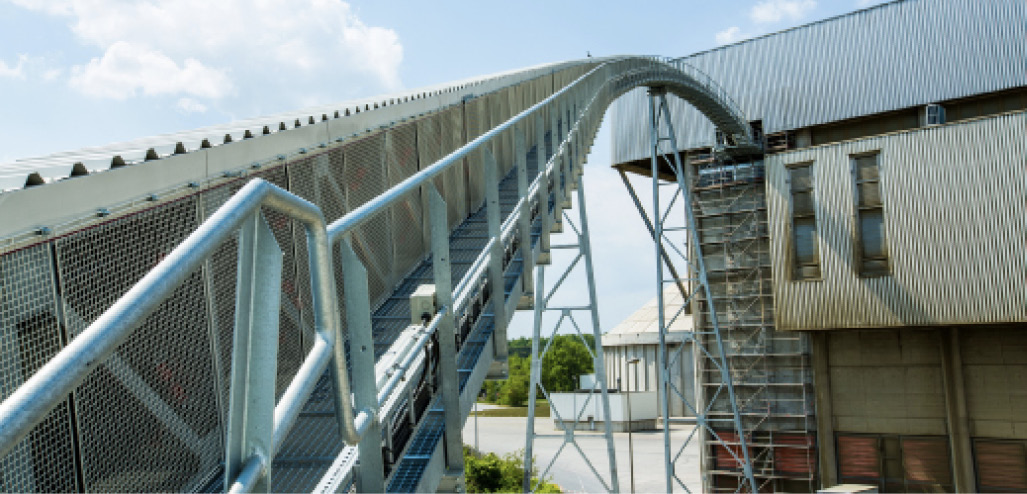
Conveying Technology in Tubular Shape or U-shape
In order to transport the alternative fuels to the calciner and to the main burner, BEUMER experts, depending on the application, evaluate different variants of mechanical conveying systems, which for example include the pipe conveyors.
“This conveying technology is not only eco-friendly and requires low maintenance,” explained Tuma. “It’s enclosed type of construction also protects the environment safely from material falling down and emissions. Another advantage is the elimination of dust development on the running line.”
Due to its ability to navigate curves, considerably fewer transfer towers are required compared to other belt conveyors and the system can be customized to the individual routings. “If necessary, we can further equip the conveyor,” said Tuma, “for example with a scraper conveyor in order to minimize clean-up, or with a dedusting filter.”
A further efficient possibility is the U-shape conveyor. It can be simply integrated and is also suitable for long distances and rough terrain as well as horizontal and vertical curves. Just like in the pipe conveyor, the material conveyed is protected against external influences such as wind, rain or snow and the environment against possible material loss. The conveying solution is suitable for coarse and very fine material.
“At the feeding point, the U-shape conveyor is open like conventional troughed belt conveyors,” said Tuma. “A special idler configuration brings the belt in a U-shape.” This way the material conveyed reaches the discharge station. An idler configuration similar to that for the shaping is used for opening the belt.
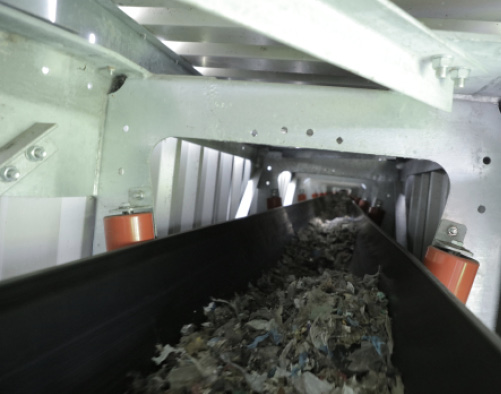
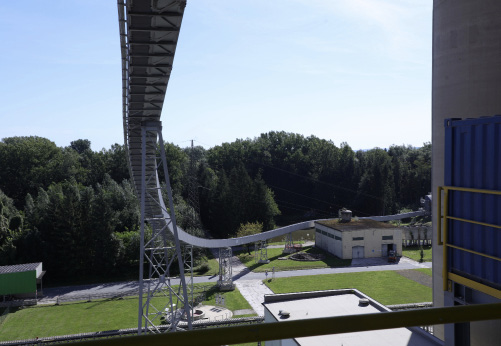
Reduces Infiltrated Air to the Calciner
Conveying elements lead the material to the discharge screw conveyors of the BG OptiLock construction series. The airlock of this system solution protects the pyroprocess from the infiltrated air, i.e. the air that additionally and uncontrollably enters from the outside with the fuel.
Also the BG OptiLock is equipped with load cells and transfers the bulk material continuously to a screw conveyor, which feeds the calciner. The speed of the discharge screw conveyor is controlled so that the shown weight of the entire system and the real material volume in the container is constant. “As the material can catch fire, all systems are carried out according to the ATEX directives,” said Tuma.
As a single-source provider, BEUMER Group said it has substantial competence in handling with alternative fuels and is able to support the owners of cement plants efficiently – all within a short period of time. All components are complementary and ensure the continuous and economical feeding with alternative fuels.

